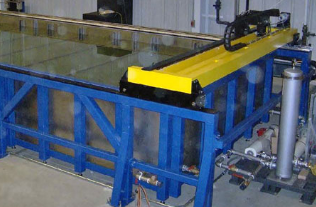The use of ultrasonic measurement technology is fast becoming one of the most effective and reliable ways to get an accurate picture of certain aircraft components, systems and the materials that go into making them. And although many outside the field of aeromechanics associate ultrasound technology with its medical applications, it is used in many fields. Here are some facts about this exciting and innovative technology that promises to make aircraft safer and more reliable.
- Ultrasound was first developed for industry: Yes, this is true. People who associate ultrasound with its medical applications should know that the early ultrasonic devices were specifically designed to measure flaws in metal castings. This occurred back in the 1940’s.
- Transducers come in a wide variety of sizes: In fact, one of the smallest ultrasound transducers ever made is capable of being placed into a blood vessel.
- Ultrasound technology can be used on virtually any part of the body: The areas of the body that can be diagnosed using ultrasound technology include the heart, blood vessels, the abdomen, the testicles, the neck, breasts, etc. So sensitive is ultrasound technology that it can help to examine tumors and other abnormalities long before they are able to be palpated (detected by touch).
- Animals, like bats, dolphins, whales and shrews use echolocation to find their prey: In the case of dolphins, sound is used to not only locate prey, it is also used to stun and even kill them.

- Ultrasound is omni-directional: Ultrasonic technology is able to measure flow rates moving in all directions. This allows devices such as ultrasonic emersion tanks to get a clear representation of the total flow being measured.
- Ultrasonic technology can monitor various parameters: Ultrasonic technology can measure transient and steady flow, flow direction, temperature, and cumulative usage and also speed of sound unlike other kinds of diagnostic technologists.
- An automated ultrasonic inspection system works in three stages: First, it must produce the wave. Then it must receive echoes from it. Finally, these waves must be interpreted. This is the case with all ultrasonic equipment regardless of the application for which it is being used.
We hope these fun facts will inspire you to not only use our equipment to test and inspect your aircraft components, but that will also spark in your interest in this fascinating field. In the mean time, check out some of our state-of-the-art ultrasonic equipment such as our ultrasonic emersion tanks and bubbler systems.
